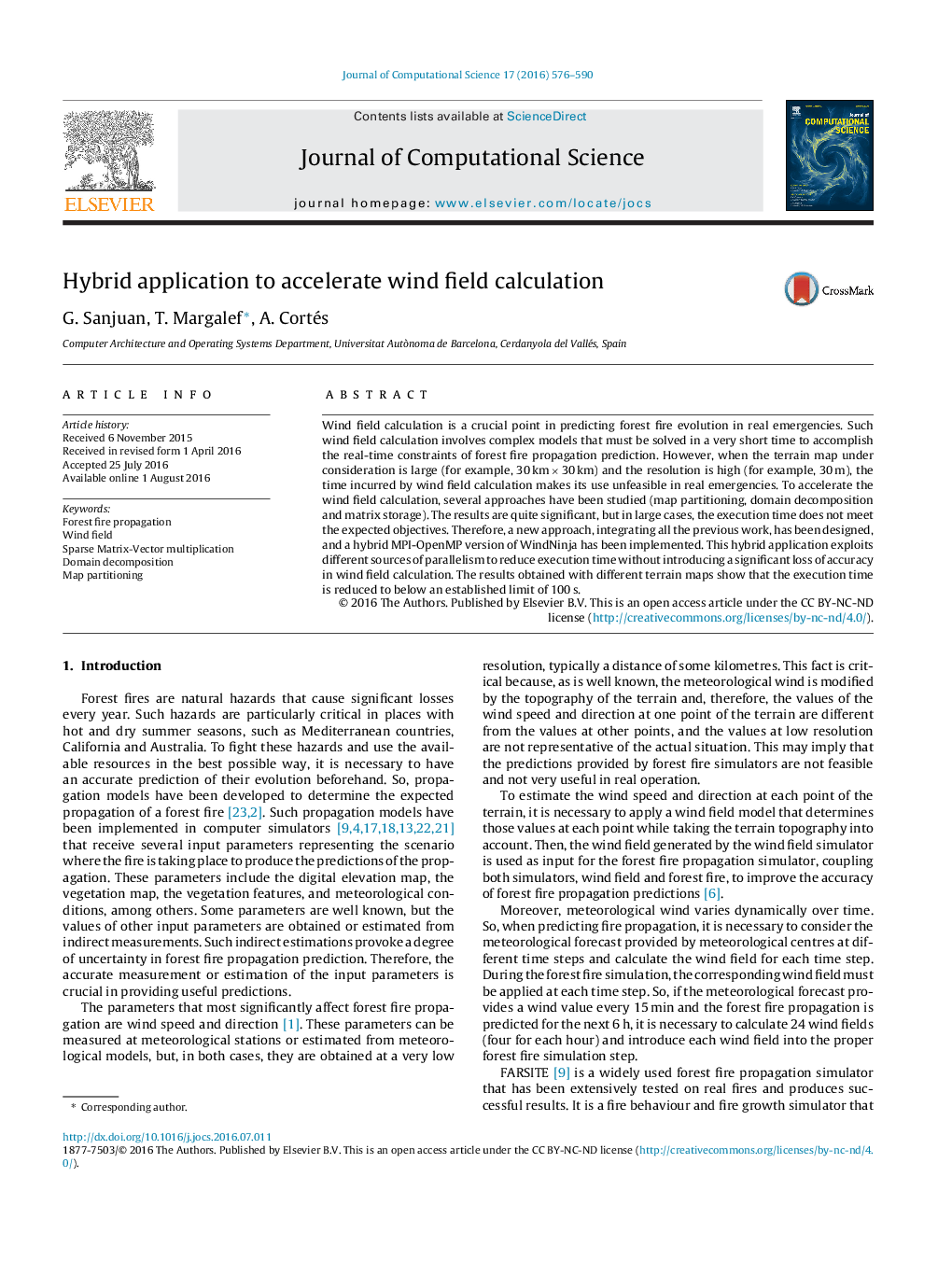| Article ID | Journal | Published Year | Pages | File Type |
|---|---|---|---|---|
| 4951109 | Journal of Computational Science | 2016 | 15 Pages |
â¢Predicting forest fire propagation must meet strict real time constraints.â¢Wind field calculation is mandatory to provide accurate forest fire propagation prediction.â¢When maps are large, wind field calculation takes too long time and it does not meet time constraints.â¢An MPI-OpenMP hybrid application has been developed to accelerate wind field calculation.â¢The application integrates improved Sparse Matrix-Vector multiplication methods, Schwarz Alternating domain decomposition method and map partitioning.
Wind field calculation is a crucial point in predicting forest fire evolution in real emergencies. Such wind field calculation involves complex models that must be solved in a very short time to accomplish the real-time constraints of forest fire propagation prediction. However, when the terrain map under consideration is large (for example, 30 km Ã 30 km) and the resolution is high (for example, 30 m), the time incurred by wind field calculation makes its use unfeasible in real emergencies. To accelerate the wind field calculation, several approaches have been studied (map partitioning, domain decomposition and matrix storage). The results are quite significant, but in large cases, the execution time does not meet the expected objectives. Therefore, a new approach, integrating all the previous work, has been designed, and a hybrid MPI-OpenMP version of WindNinja has been implemented. This hybrid application exploits different sources of parallelism to reduce execution time without introducing a significant loss of accuracy in wind field calculation. The results obtained with different terrain maps show that the execution time is reduced to below an established limit of 100 s.
